The Best Adventure Holidays In The World
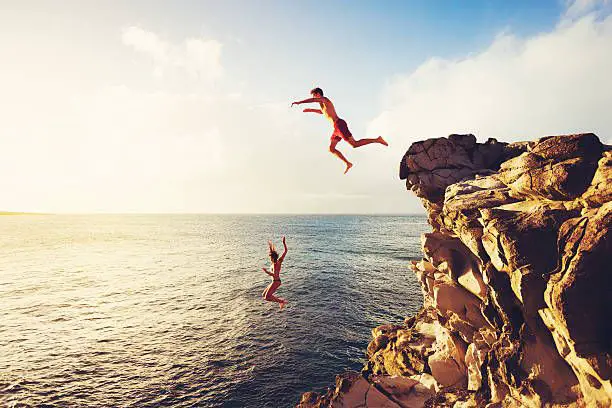
In search of an adrenaline rush? Do you have a desire to discover the world's undiscovered wonders? You've found it! Vacations that mix travel and thrilling events are called "adventure holidays."
The world is full of exhilarating locations for adventure enthusiasts, from conquering massive mountains to diving into the depth of the oceans.
Let's look into some of the top adventure vacations available worldwide.
Trekking in the Himalayas, Nepal
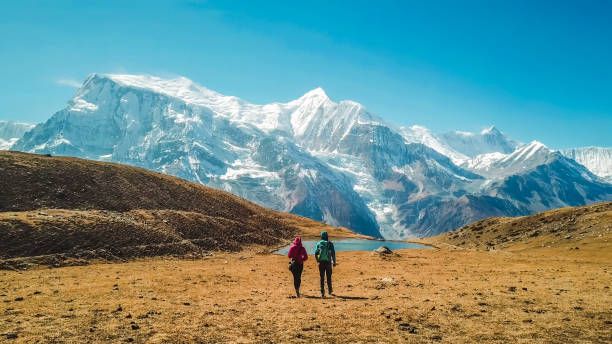
Nepal, home of the magnificent Himalayas, has long been a sought-after location for trekkers.
Trekking in the Himalayas offers a once-in-a-lifetime adventure with its towering peaks, treks, and rich cultural legacy.
Here, we explore some of the most well-traveled Himalayan trails and dive into the fascination of trekking in Nepal.
Everest Base Camp Trek
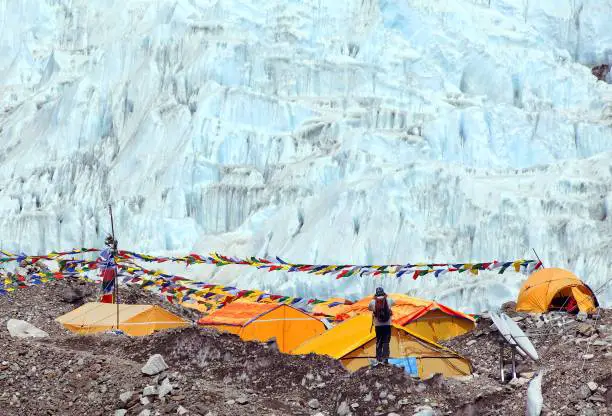
The Everest Base Camp Trek is a well-known excursion that leads you to Mount Everest's (8,848-meter) foothills.
The trek leaves from Lukla and travels through Sherpa settlements, rhododendron woods, and stunning valleys while providing breathtaking views of Everest, Lhotse, Nuptse, and other Himalayan giants.
At Everest Base Camp, where climbers get ready for their ascent, the journey achieves its apex.
Immerse yourself in Sherpa culture as you travel, stop at monasteries, and take advantage of the welcoming atmosphere at tea houses.
Annapurna Circuit Trek
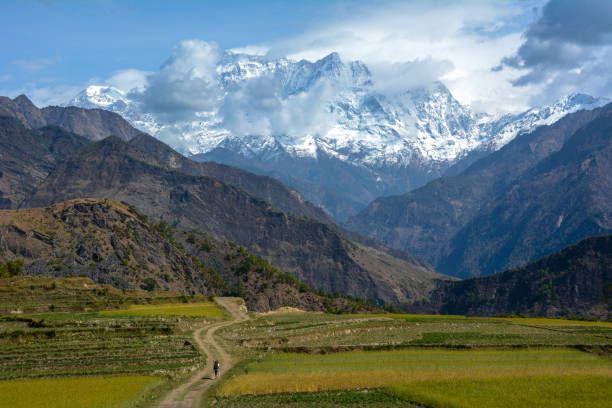
The Annapurna Circuit Trek, one of the most well-known treks in the world, takes you through different settings, from lush green valleys to barren high-altitude deserts.
The trek skirts the Annapurna Massif and provides breathtaking views of Dhaulagiri (8,167 meters) and Annapurna I (8,091 meters).
Visit numerous ethnic villages, cross suspension bridges, and relax in the hot springs in Tatopani.
Enjoy your sense of accomplishment as you pass across the Thorong La Pass (5,416 meters), the trek's highest point, and take in the stunning panoramic views.
Langtang Valley Trek
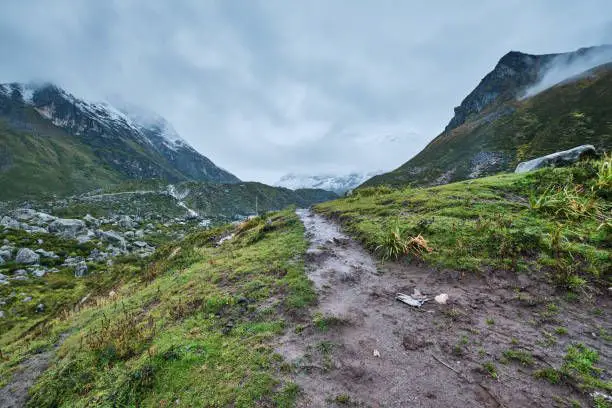
The Langtang Valley walk, close to Kathmandu, is a fantastic choice for those looking for a shorter walk without sacrificing breathtaking views.
The Langtang National Park, known for its varied flora and fauna, is traversed by the trail.
You can see Langtang Lirung (7,227 meters) and other snow-capped peaks from Kyanjin Gompa, which you reach after trekking through lush forests, rhododendron groves, and charming villages. Experience the mountain hospitality and local Tamang culture firsthand.
Manaslu Circuit Trek
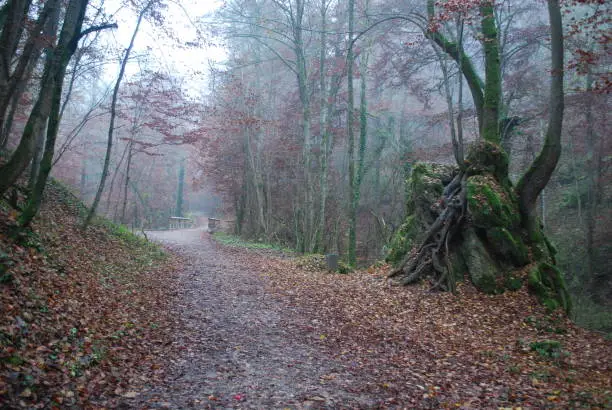
The Manaslu Circuit Trek offers a thrilling trip for those looking for a more distant and off-the-beaten-path experience.
This journey circles Mount Manaslu (8,156 meters), the eighth-highest summit in the world in western Nepal.
The trail leads you through pristine landscapes, lovely villages, and lush woods, and it has fewer trekkers than the Everest and Annapurna regions.
Cross the majestic Larkya La Pass (5,160 meters), take in the region's numerous ethnic cultures, and be in awe of the Manaslu area's unspoiled beauty.
Upper Mustang Trek
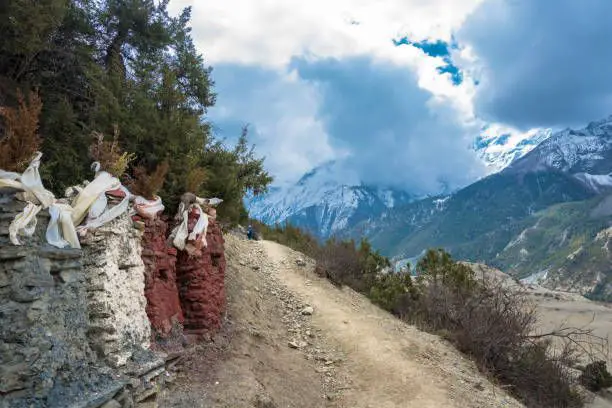
Explore the forbidden Upper Mustang, a magical kingdom renowned for its old Tibetan Buddhist culture and distinctive landscapes.
Upper Mustang's arid desert-like scenery, soaring cliffs, and ancient mud-brick settlements make trekking there feel like entering a different universe.
Visit historic monasteries, see the walled city of Lo Manthang, and get to know the friendly locals.
The Upper Mustang Trek offers a unique chance to discover an undiscovered Himalayan gem's unspoiled splendor.
Trekking in the Himalayas of Nepal is a life-changing activity that combines physical difficulty, breathtaking scenery, and cultural immersion.
The magnificence of Nepal's Himalayas will enthrall you whether you decide to take the fabled Everest Base Camp Trek or explore the less popular pathways.
You'll have a lifetime experience as you stroll through breathtaking scenery, engage with locals, and cross mountain passes.
So don your hiking boots, embrace the Himalayan spirit, and set out on an experience that will leave you in awe of the Himalayan grandeur.
Safari in Serengeti National Park, Tanzania
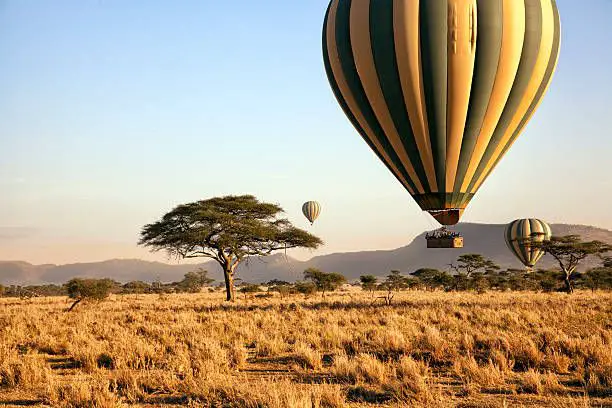
An unmatched opportunity to experience the unadulterated grandeur of the African wilderness and the captivating rhythm of nature is a safari in Tanzania's Serengeti National Park.
The Serengeti, one of Africa's most famous national parks and a UNESCO World Heritage Site, is a haven for wildlife and a paradise for nature lovers.
Northern Tanzania's Serengeti National Park is an area of savannah plains, woods, and riverine forests that covers approximately 14,750 square kilometers (5,700 square miles).
Millions of wildebeest, zebras, and other herbivorous animals travel through the park each year searching for new grazing and water, creating a magnificent natural phenomenon that is the area's most famous feature.
Unquestionably, one of the highlights of a Serengeti safari is the wildebeest migration. It is great to see the herds in motion, cross rivers abounding with crocodiles, and go over the plains.
The Maasai Mara Reserve in Kenya and Tanzania's Serengeti are where the Great Migration travels, but the exact timing varies every year.
The park is home to one of the densest concentrations of lions, leopards, cheetahs, and hyenas. During your safari, you might also see elephants, giraffes, buffaloes, zebras, and several different kinds of antelope.
With almost 500 bird species documented in the park, the Serengeti is a birdwatcher's dream.
Game Drives and Cultural Encounters
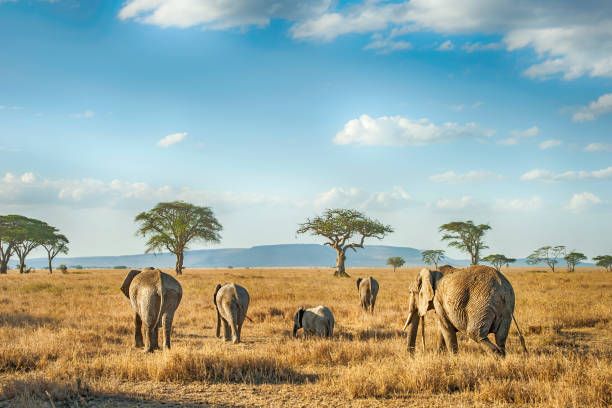
Game drives are means of exploration of the beauty of the Serengeti. You'll travel across the park in open-top 4x4 vehicles with knowledgeable safari guides, delving deeply into the wilderness.
Because of the guides' experience and local knowledge, you have the highest opportunity of seeing wildlife and experiencing amazing things.
Safaris on hot air balloons is another well-liked option for seeing the Serengeti from a distinctive angle.
You will have a bird's-eye view of the enormous herds, expansive vistas and possibly even catch a glimpse of elusive predators as you drift silently over the plains before sunrise.
Serengeti safari can also be enriched by cultural contacts. Inhabitants of the neighborhood are the Maasai, who are recognized for their lively culture and traditional way of life.
It is possible to have a greater understanding of the culture and relationship to the land of the area by interacting with the Maasai and learning about their traditions, dances, and way of life.
Best Time to Visit

The best time to visit Serengeti National Park depends on the specific experiences you wish to have.
The wildebeest migration typically occurs between November and July, with the herds crossing the Mara River between July and September.
This period offers incredible opportunities to witness dramatic river crossings and predator-prey interactions.
The best time to see wildlife is during the dry season, which runs from June to October. Animals congregate near water sources during this time, making it simpler to see them.
The rainy season, which lasts from November to May, delivers beautiful green scenery and a profusion of birdlife, different species may be more dispersed due to water availability across the park.
A safari in Serengeti National Park is a must-do experience that allows you to get up close and personal with some of Africa's most famous animals and experience the unspoiled beauty of the natural environment.
The Serengeti offers a genuinely immersive safari experience, with highlights including the great wildebeest migration and up-close encounters with lions and other spectacular animals.
The Serengeti National Park is guaranteed to leave you in awe of its grandeur and foster a lifetime appreciation for nature's beauties, whether you choose to go on thrilling game drives, soar above the plains in a hot air balloon, or interact with the local Maasai culture.
Scuba Diving in the Great Barrier Reef, Australia

A captivating activity, scuba diving in Australia's Great Barrier Reef will take you to an underwater wonderland rich with vibrant marine life and stunning coral formations.
The Great Barrier Reef provides an unrivaled opportunity to discover the wonders of the deep water and take in the splendor of this UNESCO World Heritage Site as one of the most well-known dive sites in the world.
Discover why divers are drawn to the Great Barrier Reef by delving into the specifics of scuba diving there.
The Great Barrier Reef, which stretches over 2,300 kilometers (1,400 miles) along the northeastern coast of Australia, is the world's biggest coral reef system.
It is a refuge for divers and snorkelers alike because it is made up of thousands of different reefs and innumerable varieties of marine life. It is amazing to see the variety and richness of marine animals present here.
The Great Barrier Reef offers different underwater environments and diving opportunities.
Each dive location reveals a different ecology and a variety of marine life, ranging from shallow coral gardens to complicated reef structures that resemble mazes.
During the humpback whales' migratory season, a stunning variety of tropical fish, turtles, reef sharks, dolphins, rays, and even the majestic whales can all be seen.
In addition, the Great Barrier Reef is well known for its stunning coral formations. A breathtaking backdrop for your underwater adventure is provided by delicate hard corals, vivid soft corals, and magnificent bommies (coral outcrops).
Swim between towering coral walls, investigate complex swim-throughs, and be in awe of the reef's beautiful hues and deft textures.
Dive Sites and Experiences
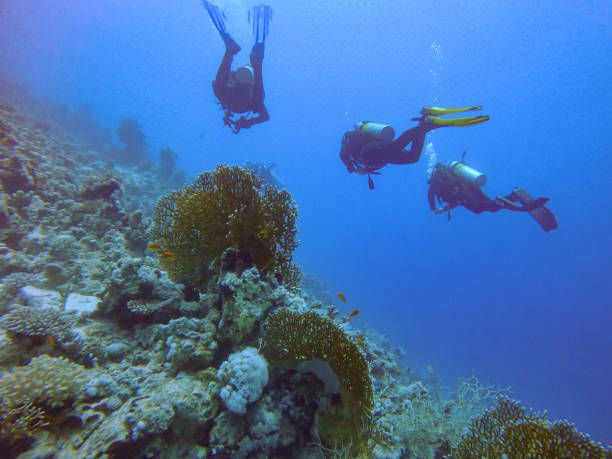
Divers of all skill levels, from novices to seasoned enthusiasts, can take advantage of the Great Barrier Reef's numerous diving spots. Popular diving locations include:
Cod Hole: This reef's northernmost outpost is known for its encounters with friendly potato cod, which may reach lengths of up to 2 meters (6 feet). Beautiful coral gardens and a wealth of marine life are also on the site.
Osprey Reef: Located in the isolated Coral Sea, Osprey Reef is well-known for its breathtaking vertical walls, shark sightings, and superb visibility.
The chance to see hammerhead sharks, manta rays, and other pelagic species when diving at Osprey Reef is available.
Ribbon Reefs: The Ribbon Reefs are a group of dive sites with different marine ecosystems in the northern part of the reef.
You can see spectacular coral formations, colorful reef fish, and sea turtles anywhere from shallow coral gardens to deeper cliffs.
The Agincourt Reefs, close to Port Douglas, offer accessible diving for divers of all experience levels.
Excellent visibility, colorful corals, and interactions with different marine species, such as reef sharks, stingrays, and Maori wrasses, may all be found in this area.
Conservation and Sustainable Diving
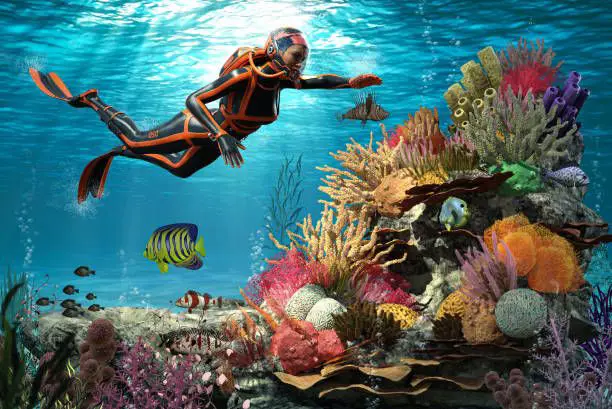
It is crucial to protect the Great Barrier Reef and its delicate environment. Visitors and dive professionals are urged to engage in ethical diving and follow sustainable tourism guidelines.
This involves respecting marine life, keeping adequate buoyancy control, and not interacting with or harming coral.
Numerous dive shops in the area actively support reef conservation efforts and inform tourists about the value of preserving this delicate habitat.
They frequently allow divers to be part of coral planting initiatives or contribute to ongoing research projects.
Best Time to Dive

The Great Barrier Reef can be dived year-round, but the optimal time to visit may depend on your preferences and weather conditions.
The warmer months from November to May offer warmer water temperatures, although visibility may be reduced during this period due to increased rainfall and plankton activity.
The water is often cooler but more visible during the cooler months of June through October.
Additionally, it's the best time of year to see humpback whales along the reef as they migrate.
A spectacular trip into a realm of breathtaking beauty and mind-blowing marine biodiversity awaits those who scuba dive in the Great Barrier Reef.
Whether you are an experienced diver or a novice, discovering the colorful coral gardens, coming in contact with strange marine life, and submerging yourself in the delights of the reef will leave you with priceless memories.
You'll see firsthand the delicate majesty of this natural wonder when you scuba dive in the Great Barrier Reef's beautiful waters, and you'll be motivated to conserve and preserve it for upcoming generations of divers and marine enthusiasts.
Hiking the Inca Trail, Peru

A once-in-a-lifetime experience, hiking the Inca Trail in Peru will take you on a captivating trip through history, nature, and stunning scenery.
This well-known walk takes you to the renowned fortress of Machu Picchu, a UNESCO World Heritage Site and one of the New Seven Wonders of the World, by retracing the paths of the ancient Incas.
Explore the highlights and significance of this unique event by going on a virtual trip along the Inca Trail.
A well-known trekking path in Peru's Andes Mountains, the Inca Trail is around 43 kilometers (26 miles) long.
The trail leads to the breathtaking Machu Picchu after winding through beautiful mountain landscapes, cloud forests, and Inca ruins. The trek offers insights into the rich history and culture of the Incas.
Reaching Inti Punku, commonly known as the Sun Gate, the entryway to Machu Picchu is one of the highlights of the Inca Trail.
The famous image of the historic citadel hidden among the mountains will meet you as you come out of the thick forest.
This moment of awe-inspiring arrival marks the completion of your trekking endeavors.
You'll come across well-preserved Inca ruins along the way, like Wiay Wayna and Phuyupatamarca, where you can take in the magnificent architecture and elaborate stonework and discover more about the significance and history of these historic locations.
Challenges and Preparation
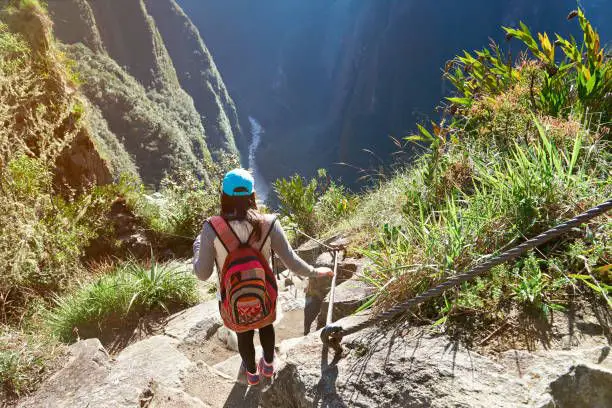
The Inca Trail is a moderately difficult walk that calls for a high degree of fitness and stamina.
The trail ascends to its highest point at Dead Woman's Pass, located at an elevation of 4,215 meters (13,825 feet), acclimation to the altitude is essential.
Physical preparation and previous hiking experience help get ready for the expedition.
It is advised to spend a few days acclimatizing in Cusco or other high-altitude areas of Peru before beginning the trek.
This lessens the likelihood of altitude sickness and lets your body get used to the higher altitude.
Permits and Responsible Tourism

The Peruvian government has restricted the number of daily permits for the Inca Trail because of its popularity and efforts to protect the trail.
If you want to trek during the busiest months (May to September), you must get your permit well in advance.
It is best to make reservations through a reputable tour operator because they can help with permit arrangements and offer knowledgeable guides.
When trekking the Inca Trail, responsible tourism is crucial. Respecting the environment, according to trail rules, and leaving no evidence of your presence is essential.
This assures that this vulnerable and historic route will be preserved for future generations.
Best Time to Hike
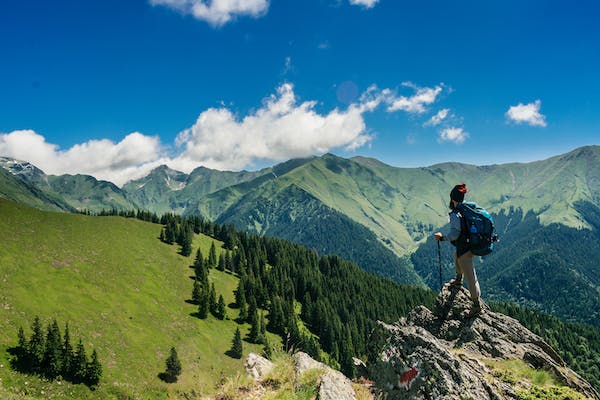
Most people agree that the best time to trek the Inca Trail is during the dry season, which runs from May to September.
The weather is often dry and sunny during this time, providing clearer views and more comfortable trekking conditions.
However, given that it is also the busiest time of year, trails may be congested.
April and October offer a fair compromise between pleasant weather and less crowding.
Although the rainy season, which lasts from November to March, is distinguished by sporadic showers, lush vegetation, and fewer trekkers, it's still advisable to be ready for muddy conditions and the potential for trail closures.
An incredible trip that combines history, culture, and spectacular natural beauty is hiking the Inca Trail to Machu Picchu.
You will be enthralled by the significance and magnificence of this unforgettable experience as you hike through the Andean vistas, past historic sites, and along Inca-carved roads.
The Inca Trail provides a singular window into the past and a chance to see the wonders of Machu Picchu in awe-inspiring and life-changing ways.
So put on your boots, accept the challenge, and set off on a tour that will leave you with priceless memories and a deep respect for the Incas' legacy.
Rafting the Grand Canyon, United States
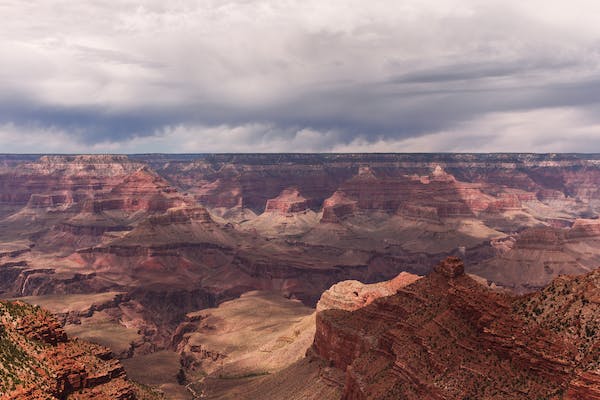
Rafting down one of the most famous natural marvels of the world, the Grand Canyon in the United States is an exhilarating and breathtaking journey.
The Grand Canyon, which the Colorado River carved over millions of years, provides a spectacular backdrop as you go over thrilling rapids, dizzying cliffs, and breathtaking scenery.
Let's examine the specifics of rafting the Grand Canyon and discover why it is a must-do activity for thrill seekers.
Arizona's Grand Canyon is around 446 kilometers (277 miles) long and reaches a depth of more than 1,800 meters (6,000 feet).
While rafting across the Grand Canyon, you will appreciate the Grand Canyon's immense size and breathtaking splendor.
There are two possibilities for this adventure, which lasts several days: commercial rafting tours or private trips.
Commercial trips offer a thorough experience with all logistics, gear, and meals taken care of and led by knowledgeable guides.
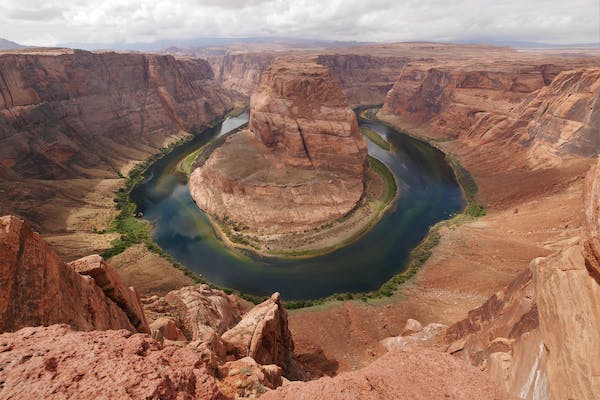
Private trips offer a more independent and individualized adventure but necessitate getting permission and managing your logistics.
Grand Canyon rafting offers a variety of highlights and adventures. As you traverse the turbulent waters, the exhilarating whitewater rapids, which range in class from class III to class V, give you an adrenaline-pumping trip.
The most experienced rafters will be tested by heart-pounding rapids like Crystal, Hermit, and Lava Falls.
The Grand Canyon rewards you with breathtaking vistas at every turn once you pass the rapids.
You will be in awe of the always-changing environment of towering red cliffs, undiscovered waterfalls, old rock formations, and tranquil side canyons.
Wildlife sightings are another perk of Grand Canyon rafting. A few of the encounters that contribute to the beauty of the voyage include seeing bighorn sheep perched on rocky ledges, gorgeous California condors soaring overhead, and spotting secretive river otters.
Preparation and Safety
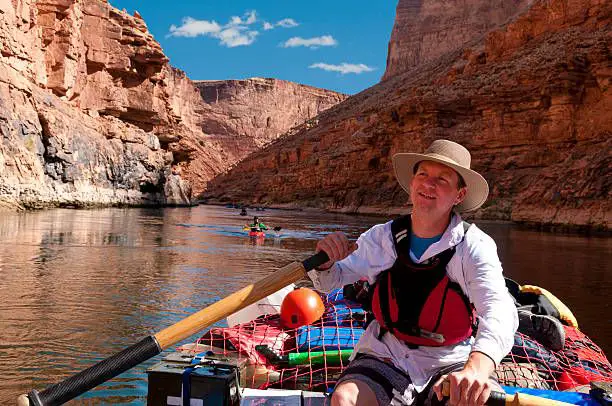
Rafting the Grand Canyon needs physical fitness as it involves paddling, trekking, and occasionally hauling supplies.
It is necessary to be in excellent health and to let your guides know if you have any physical limits or medical conditions.
You should have basic swimming knowledge because there may be occasions when you must swim in a river.
Commercial rafting excursions offer the required safety gear, such as helmets and life jackets. The skills of river navigation, safety procedures, and outdoor first aid are taught to guides.
It's necessary to follow their directions, adhere to safety precautions, and be knowledgeable about any potential hazards involved with whitewater rafting.
Best Time to Raft
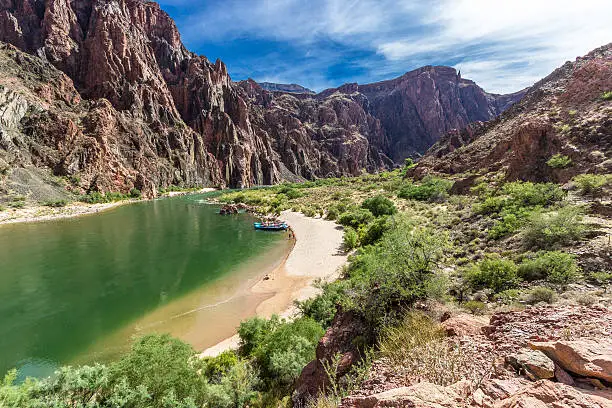
Your choices and the kind of experience you're looking for will determine the optimal time to raft the Grand Canyon.
Late spring to early fall, usually between April and October, is the best time to go rafting.
The water levels are higher, the weather is warm, and the rapids are more difficult during this time.
But because of the Grand Canyon's high demand, getting a permit might be difficult.
If you prefer fewer crowds and milder weather, it is advisable to plan far in advance and take other times into account, such as shoulder seasons or winter excursions.
Rafting the Grand Canyon is a once-in-a-lifetime experience that will immerse you in the grandeur of one of the most amazing natural wonders on the planet.
The Colorado River's unadulterated beauty and overwhelming force will take your breath away as you traverse its raging rapids, gawk at its towering cliffs, and take in the tranquility of the canyon.
Rafting the Grand Canyon offers a singular opportunity to be in touch with nature, push yourself, and make lifelong experiences.
So get ready, enjoy the rush, and set out on an incredible tour through the Grand Canyon's interior.
Ice Climbing in Patagonia, Argentina

An exhilarating and difficult adventure, ice climbing in Patagonia, Argentina, transports you to a frozen wonderland of towering glaciers, craggy peaks, and beautiful scenery.
Patagonia, in the southern part of South America, presents a rare chance to put your abilities to the test and push your boundaries in a breathtaking setting.
Let's investigate the specifics of ice climbing in Patagonia and discover why it is a popular choice among ice climbers worldwide.
The Southern Patagonian Ice Field, the second-largest ice mass outside the polar regions, is one of Patagonia's famed spectacular vistas.
Numerous glaciers, icefalls, and frozen summits can be found in this icy expanse, making it a playground for ice climbers looking for excitement and a real challenge to their skills.
The challenge of ascending the renowned Cerro Torre and Fitz Roy is one of the highlights of ice climbing in Patagonia.
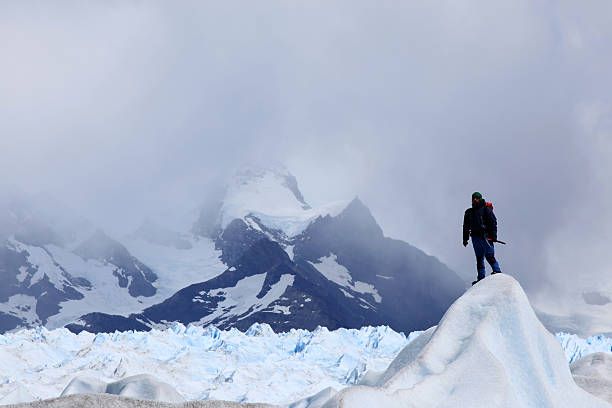
Due to their technical complexity and erratic weather, these famous peaks in Los Glaciares National Park face daunting obstacles.
Another highlight of ice climbing in Patagonia is the Perito Moreno Glacier, a UNESCO World Heritage Site.
This enormous glacier gives a rare chance to travel across its frozen surface, climb ice walls, and take in the breathtaking blue colors of its crevasses. It is in Los Glaciares National Park, close to El Calafate.
Patagonia also provides prospects for ice climbing in other areas, such as Chile's Torres del Paine National Park.
Impressive granite towers and glaciers can be found throughout the park, notably the Grey Glacier, where ice climbers may do exhilarating ascents and take in breathtaking views of the Patagonian environment.
Preparation and Safety
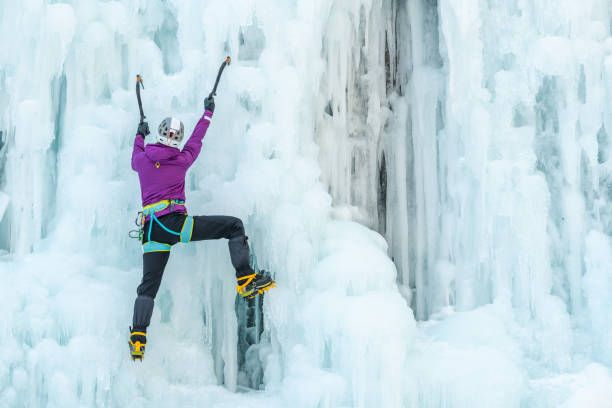
Since it includes technical abilities and an understanding of ice climbing techniques, ice climbing in Patagonia requires previous climbing expertise.
The ability to use ice axes, crampons, and other climbing tools effectively is crucial. Because climbing in snowy circumstances can be physically taxing, physical preparedness and endurance are essential.
The right clothing and equipment are essential for safety and comfort in Patagonia because of the region's notoriously unpredictable and harsh weather.
A well-fitted helmet, robust boots, waterproof and windproof outerwear, and layers of clothes to adjust to changing temperatures are all necessary.
To ensure safety and direction throughout your ice climbing journey, it is advised to climb with an experienced guide or sign up with a respected mountaineering group.
Best Time to Climb
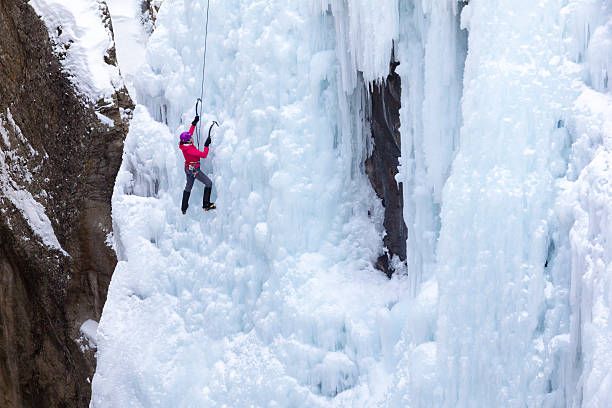
In Patagonia, the ice-climbing season lasts from November to February when the weather is more predictable and the temperatures are more comfortable.
The lengthier daylight hours during this time allow you plenty of climbing time.
It's crucial to remember that the weather in Patagonia may be erratic, with abrupt changes and powerful winds occurring frequently all year round.
It is wise to keep up with weather forecasts, be adaptable with your plans, and have backup plans in case of bad weather.
The thrill of conquering ice peaks in Patagonia is combined with the breathtaking beauty of glaciers and landscapes to create an amazing adventure.
The location is a popular choice for seasoned ice climbers looking to test their abilities due to the steep routes and unpredictability of the weather.
You'll be rewarded with unmatched views as you climb colossal ice walls and navigate frozen landscapes, as well as the sense of achievement that comes from overcoming Patagonia's frozen frontier.
Prepare yourself, accept the challenge on an incredible ice climbing expedition across Patagonia's breathtaking scenery.
Adventure vacations offer a fusion of excitement, adventure, and immersion in the planet's natural beauties.
These locations provide an escape into the extraordinary, whether you're an adrenaline addict or just looking for a vacation from the everyday.
There are countless options for unique activities, from climbing mountains to diving into aquatic worlds.
Pack your bags, face the unknown, and let the world's top adventure vacations stoke your wanderlust and leave you with lifelong memories.
